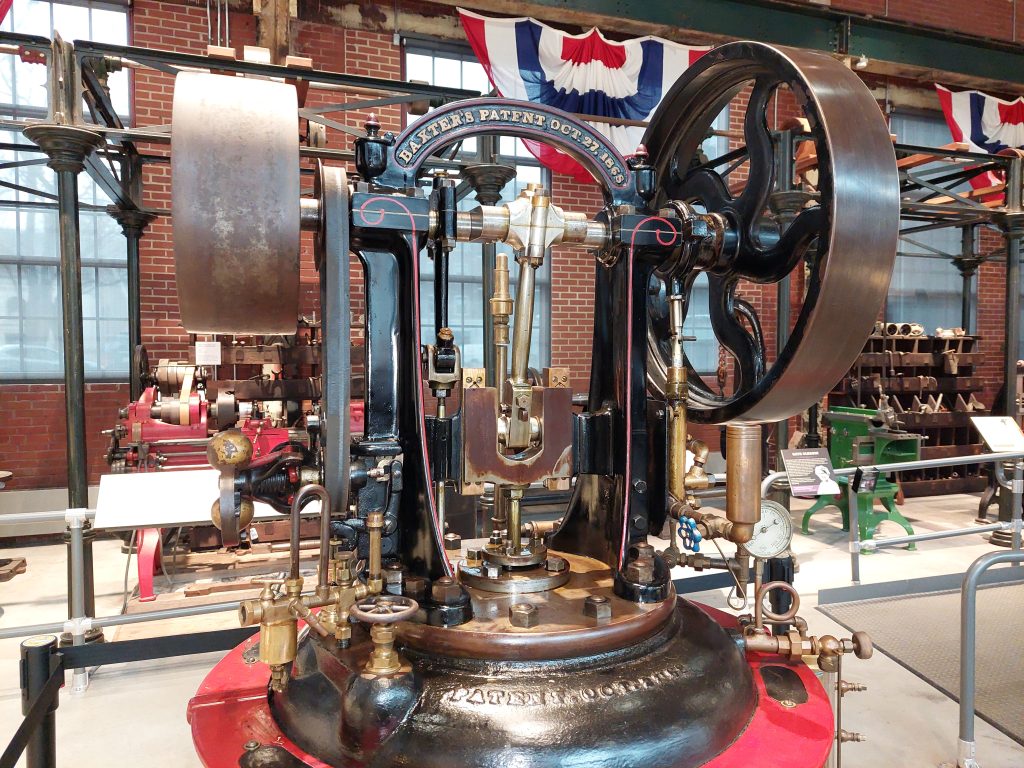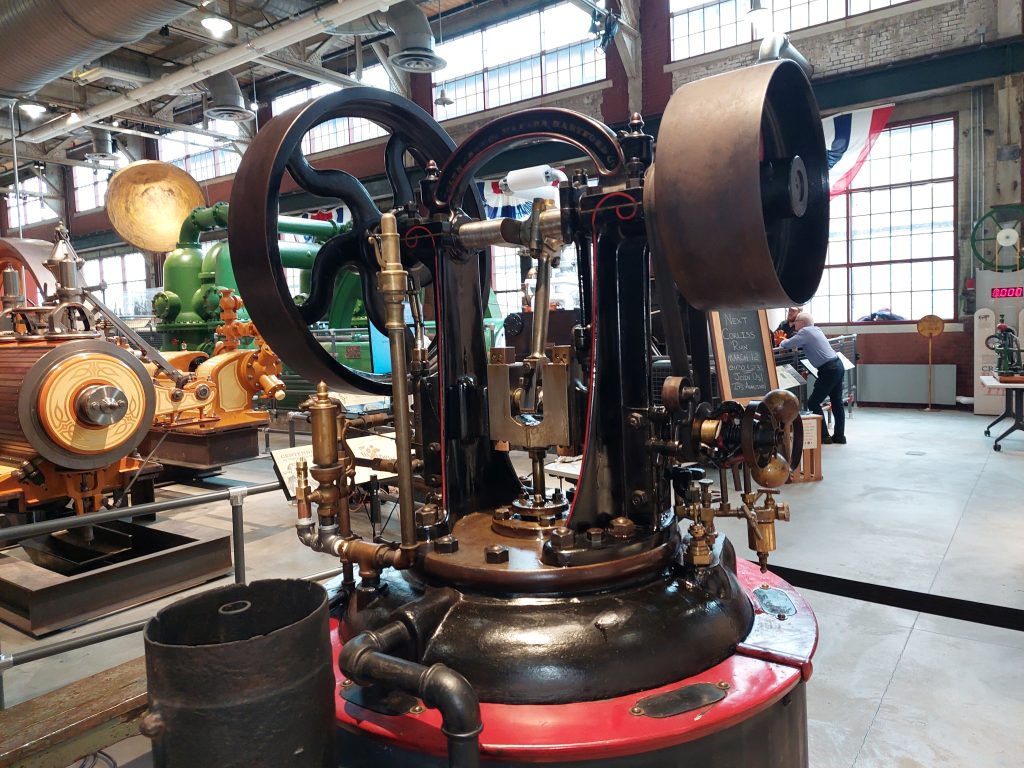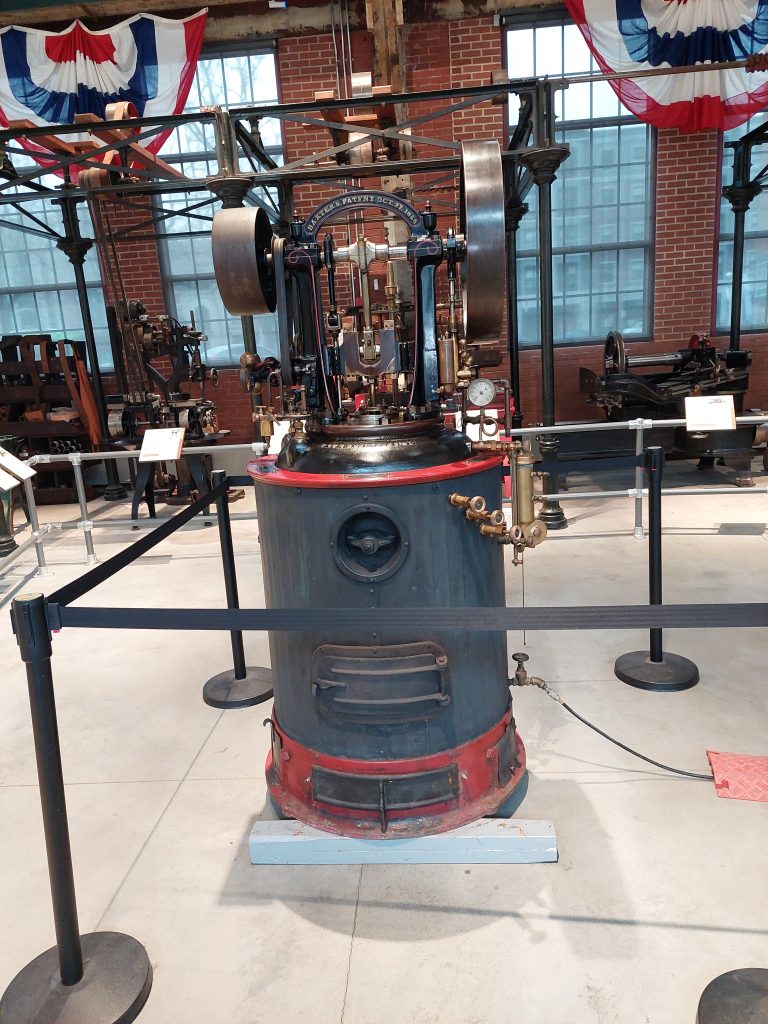Happy Pi Day! Here is that post about the steam engines.
The National Museum of Industrial History has a few gigantic, spectacularly beautiful old restored steam engines, some of them even in operating order. I’ve seen the steam exhibit before, but I have been meaning to go back to the museum to see it again, because my friend Donna’s father just helped restore a new one they got. (George is a retired woodworker and very handy.)
That new, and newly restored, addition to their collection is a Colt-Baxter “portable steam engine,” patented by a guy named Baxter and manufactured by Colt Firearms as a way to diversify after the Civil War. The Baxter was “portable” in the sense that it was only as big as a big barrel rather than building-sized; it ran at about 15 psi steam pressure and put out about 10 horsepower, was built to run a belt drive, and was ideal for powering small factories, machine shops etc — they sold maybe 300,000 of them over the years. (I learned all this at the Museum on Sunday, and on the Internet yesterday…)
The museum had a demo day Sunday, where they would power up their Corliss engine — the biggest steam engine they have, and beautifully restored — using compressed air. I figured I’d kill three birds with one stone by riding the Iguana over for a test ride, watching the Corliss in action, and seeing the new Baxter engine on display.
Here’s a video I made of the Corliss:
At about 19 seconds into the video you can see what makes a Corliss engine a Corliss: the spider-web of levers running off a central rotating plate are what control the steam valves that feed the pistons. This engine was used to run a water pump; I’m pretty sure that the black part (the front) is the steam engine end, and the green part at the back is the water pump.
And, here are a few photos I took of the Baxter:
(Along the wall in the background, you can see some belt-driven machines on loan from the Smithsonian, drills and lathes and such, that the Baxter would have powered.) The Baxter had its own furnace/boiler built into the lower section, with the piston inside the top of the “barrel” and the bulk of the machinery on top.


The museum had a few other exhibits, including a few small model engines running, as part of the demo, and one final surprise for me: the Baxter engine was operational! They didn’t have a fire running inside it, it was all compressed air like the Corliss, but here is a video of the operator starting it up:
In all, a banner day!

